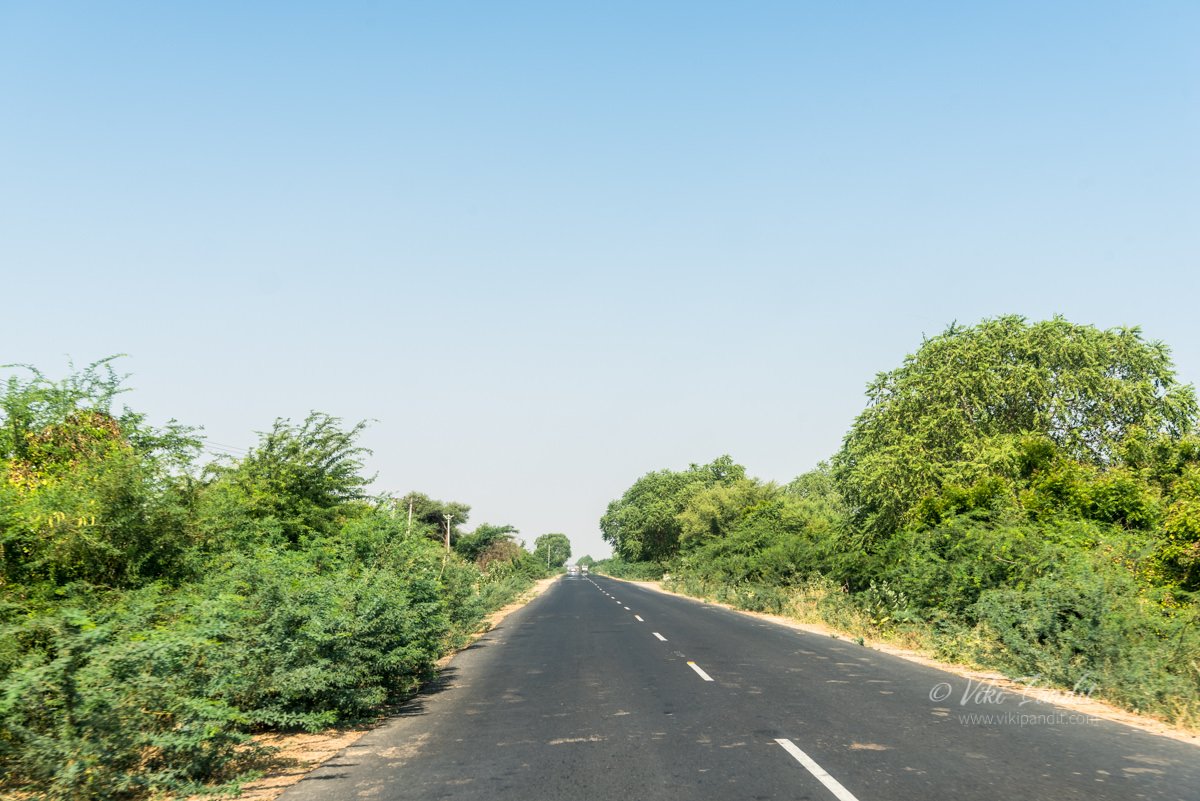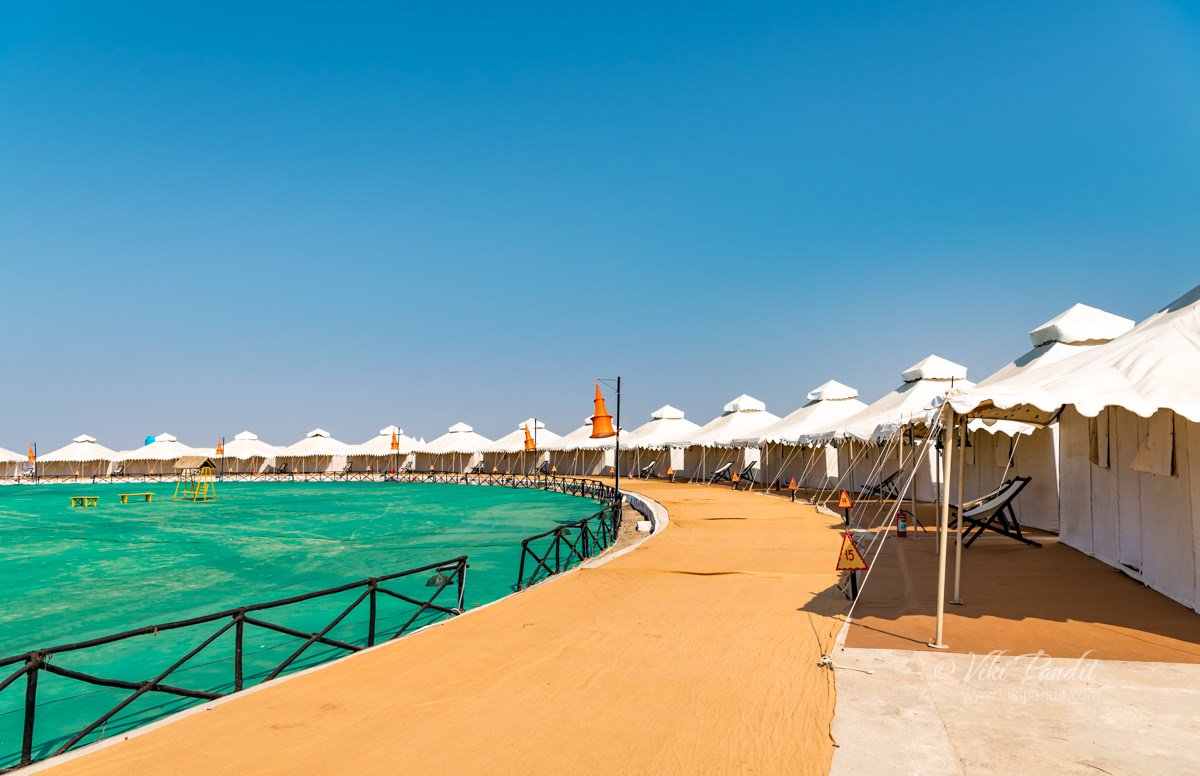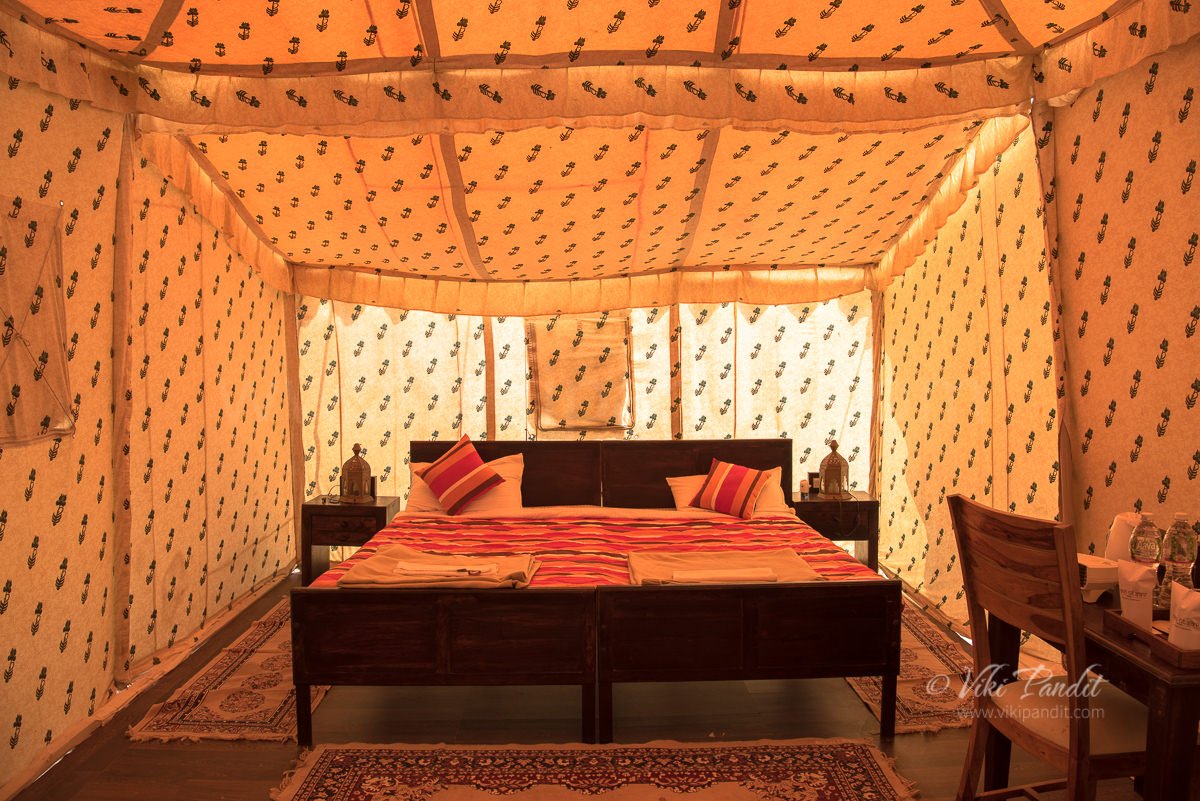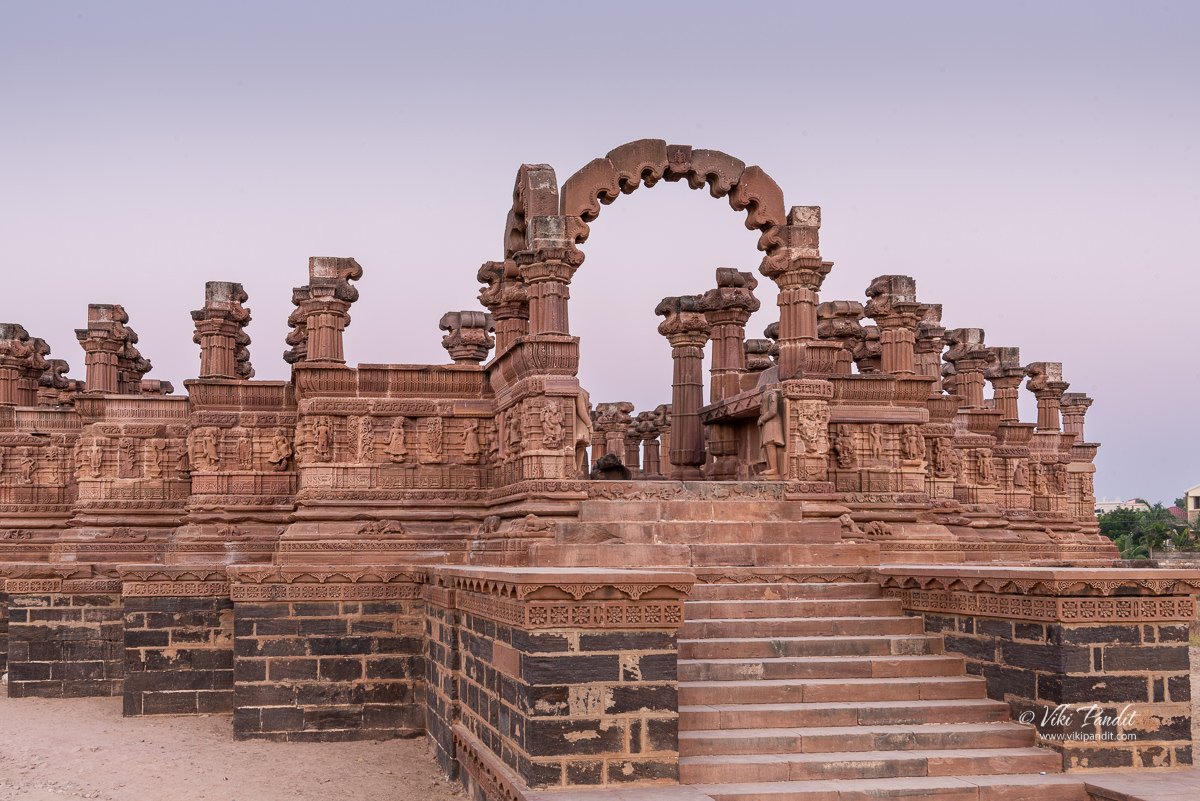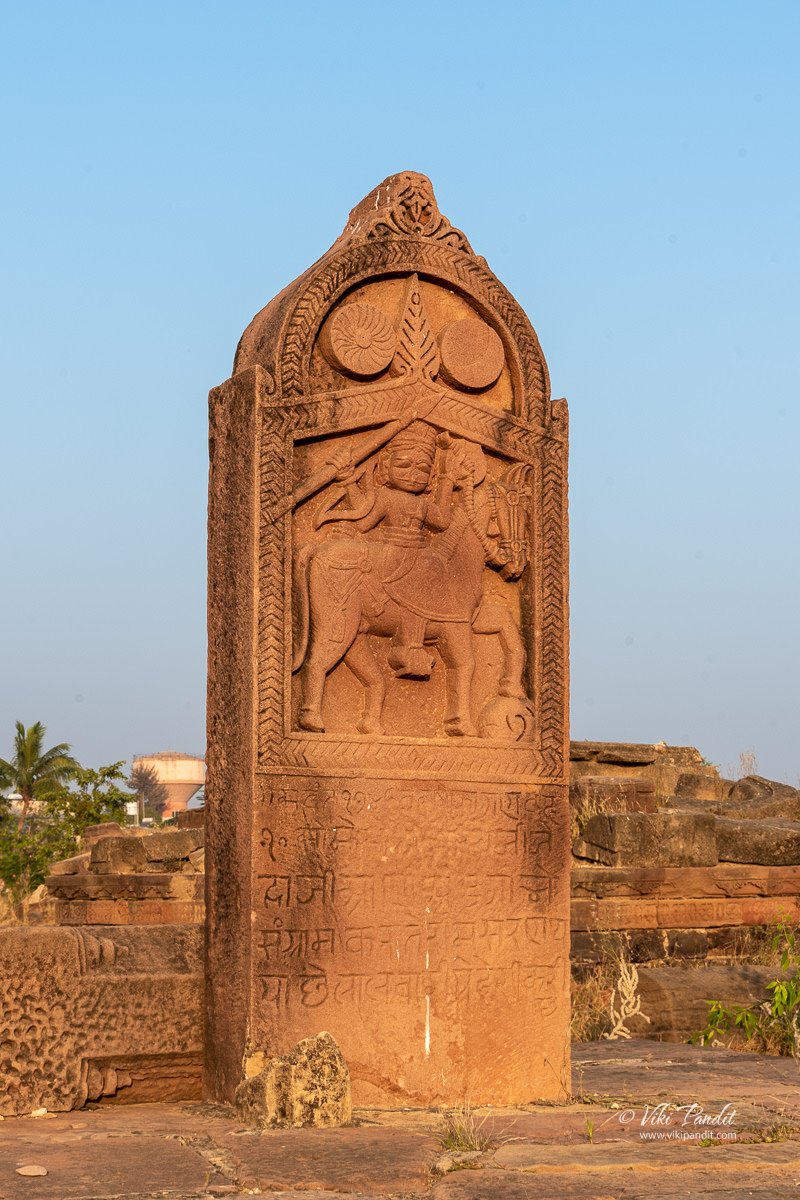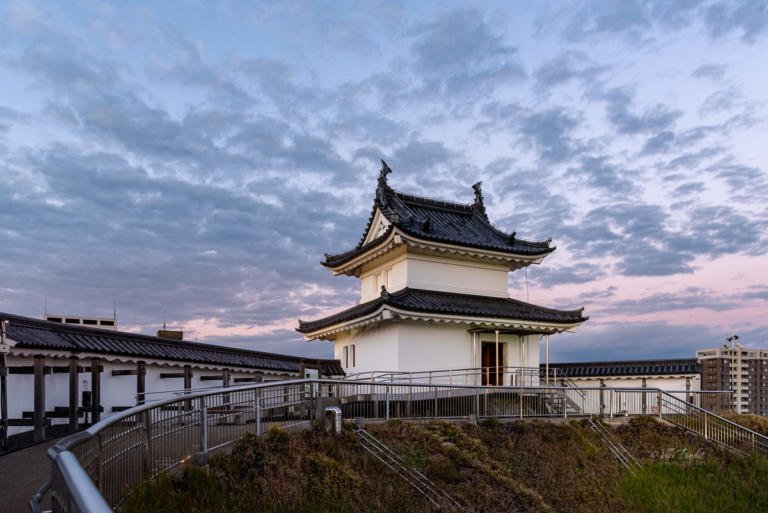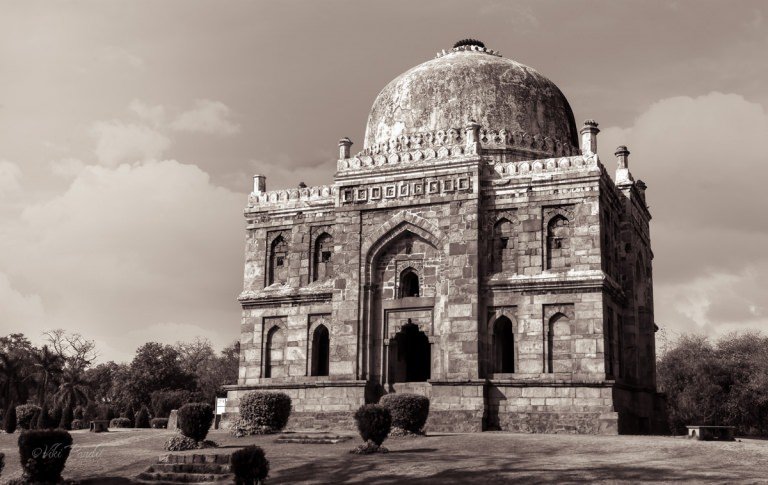The advent of winter in India brings with it the best weather to experience the historically rich nation. We were in Bhuj to spend a few days in leisure at the Rann Utsav. Rann Utsav is an initiative of the government of Gujarat, which facilitates a four-month long festival in the midst of the Thar desert, every year starting from November and lasting till February. A smart move that generates livelihood for the local villagers who are only too happy to welcome visitors from across the globe – to savor the local delicacies and to witness the unique culture of Kutch.
Bhuj to Rann Utsav
We landed in Bhuj a day before to prepare ourselves for the days at White Rann tent city. We were staying at the Click Hotel, just 15 minute drive from the Airport and just adjacent to the Bhuj Railway Station. The folks from the Rann Utsav, had set up a makeshift tent just adjacent to the hotel.
Dhordo tent city, where Rann Utsav is held, is quite some distance away from the city and they transfer visitors on buses from this base. Various buses are scheduled over the length of day at frequent intervals. We had a quiet breakfast at the Hotel and checked out at 10 am. In the morning I had quietly obtained our passes on the 11 am bus so it was no hassle for us. In fact we were upgraded to an air-conditioned Jeep.
With the bright Sun was beating down upon us, we zipped past the desert. The vegetation went from thorny Babool and Keekar bushes to a desolate golden brown flat desert.
Welcome at Dhordo Tent City
We reached Dhordo tent city in an hours time. Dhordo is the nearest village near the tent city. A large gate welcomed us into the complex.
The visitors got down one by one form the bus and were taken on one of the buggies to the reception hall.
The reception hall lies on the right just after the entrance gate. At the reception, we were handed out our meal tickets to use over the period of our stay. Our luggage was sent directly to our tent.
Each tent is a stand-alone unit, laid out in a circular area. with a massive green carpeted area in the center. The tents were clean and with lot of space to move around.
The sun rays are softened by the thick dotted tent cloth and creates a beautiful glow inside. The AC tents were equipped with all possible amenities that one can think and ask for – Room coolers, round the clock supply of warm water in the middle of a desert.
It was mid afternoon and the AC was already on. Let me tell you right now, even though its November, the afternoons are very bright and consequently hot.
Day 1 at Rann Utsav
It was lunchtime, and after cooling down in front of the AC, we walked out for a block towards the dining hall nearest to our lodging. Two magnanimous dining halls serve sumptuous authentic Kutchi cuisine at the tent city. The dining hall is huge, about the size of a small football field. The eat-as-much-as-you-want buffet is delicious, but vegetarian. They also have special counters set up for Jains, as their food requirements are rather strict. During the stay of our span, I had various dishes, each fulfilling my insatiable appetite for local delicacies.
With our satisfied tummies, we got hold of one of the buggies ferrying visitors around the complex and requested him to take us on a quick tour of the area. The Rann Utsav a city made of more than 400 AC and non-AC tents, divided into 7 blocks, each with around 60 tents. Some of them are basic tents and some premium like the one we were lodged in. The driver also showed us the executive tent, allotted to VIP’s. He went on proudly how the current Prime Minister of India, Narendra Modi had been their guest for a couple of days.
He dropped us off in front of our block. We spent the rest of the afternoon lazing on the cot.
As evening approached, we were informed about the sunset visit to white Rann at 5.50. We slipped into the local village attires that we had obtained the previous day from Waniyawad market in Bhuj. There are many local handicraft shops around Bhuj and their artisans, ingenious with thread and needle create extremely fine style of embroidery called Mutwa, patterned around tiny mirrors.
Sunset at White Rann
Nothing beats a sunset and that too at the endless desert of White Rann. While basking in the beautiful sunset the only thought that grazed my mind was this, right here – is one of the “Real” 7 wonders of the world. During the monsoon months, the Rann of Kutch is submerged in sea water. As the sea water finally begins to recede in October, the Agariyas move in and begin the elaborate process of salt farming. First, they dig wells to pump out highly saline groundwater from the lake of brine that lies 40 feet below the crust.
More pictures of the sunset at Rann of Kutch
White Rann at midnight
We stayed awake till midnight when the die-hard night crawlers came out of their tents as did we. We were taken to the zero point where the full moon showered us in its blue light.
Day 2 at Rann Utsav
The next day, we woke up late after the midnight stroll at White Rann. The weather was just perfect, not to warm and neither to cold. We stayed in for much part of the morning. There wasn’t much to do at the edge of a desert and as we chatted away, loosened its grip on our minds. Without the demands of schedules crammed with “attractions” and “things to do – we were free to let thoughts unravel, reflect, or simply tune out.
We got out of bed around noon. A tour bus was scheduled to pick us up for Kalo Dungar. After another round of paneer and mawas, we were ready to visit the highest point in Kutch.
Gandhi-Nugam
The bus picked us up at 3 pm. The driver was a bit of a novice and he lost his way a couple of times. On the bus a young guide explained to us how surrounded by the sea on one side and the grim, treeless and practically inaccessible Rann mountains on the other, Kutch had been for centuries cut off from the rest of India. With the sea as their primary outlet, the local tribes took to the sea, trading with Arabian kingdoms. Yet while Kutchies have traveled far and wide, Kutch itself remained in a time warp, closed to the influence on the Indian subcontinent.
In the villages around Kutch, these nomadic tribes, each with their own unique tradition of craft-work passed down from generation to generation, gave Kutch its reputation for producing India’s most beautiful handicrafts.
It is at one of these villages where we got down to indulge ourselves in some of the Kutchi handicrafts. Amid the arid and barren land of Kutch, a new dimension is added by the vivid imagination of Rabari women.
Rabari embroidery is characterized by chain stitches and a generous use of mirrors. The women depict the world around them, without the help of sketches or patterns. The only material used is a simple needle and thread, which they purchase from Bhuj, the nearby town. Mani bought a stole for herself.
Many of the villages where the Rabaris, Ahirs, Meghwalis and other tribes lived were devastated by the 2001 earthquake.
After spending an hour among the most vivid shopping mall, we left for Kalo Dungar.
Kalo Dungar
We ride out deep into the desert to explore Kalo Dungar also known as the Black Hill. Kalo Dungar is the highest point in Kutch and the best place to enjoy a panoramic view of the amazing Rann of Kutch. Though not literally black, the hill is known so because in olden times, the merchants returning to Kutch from Sindh used to be guided by this lonesome hill in the grim desert, which used to appear black because of the shadow cast by the sun.
[su_icon icon=”icon: info” background=”#f20000″ color=”#ffffff” text_color=”#4a4a4a” size=”14″ shape_size=”10″ radius=”4″ text_size=”18″ ]More pictures of Kalo Dungar[/su_icon]
It was dark by the time we reached the tent city.
Day 3 at Rann Utsav
Sunrise at White Rann
I would be the last person to get up at 5 am on a vacation. But I did and yes I am not complaining. I was witness to the most lovely sunrise over the white melted salts of White Rann. The silence accompanied with the vastness of space, the cool breeze of early November and the locals dressed up in ghagra & cholis make this moment a feast for my disenchanted urban soul.
More pictures of the sunrise at White Rann
Back to Bhuj
It was a special couple of days in White Rann. For centuries, Kutch had its own time, currency and language. Its walled cities were locked at sunset and opened at dawn. It is said, during the reign of Rao Khengarji III between 1876 to 1947, the keys of the five gates of Bhuj, were delivered to him every night and handed back every morning. This system ended in 1948, when his successor, Maharao Madan Sinhji, acceded to the Indian Union, and in November 1956 Kutch became a district in the state of Bombay.
Best time to visit Rann of Kutch
The climate in Rann owing to its desert land is considered to be one of the harshest and hottest temperatures recorded in India. The summer temperatures go as high as 50 degree Celsius. The winters are also quite extreme with temperatures dropping to as low as 0 degree Celsius. During the monsoon, the salt desert is covered with water considering its proximity to the Luni, Rupen and Indus rivers. The marshy desert is only about 49 feet above sea level.
The best time to visit Rann of Kutch is in winters at the time of Rann Mahotsav. Rann Utsav usually starts from the first week of November & usually, lasts up to March. One of the biggest salt deserts in the world, the great Rann of Kutch in the Gujarat state of India is known not only for its natural splendor but for what its inhabitants have created – The Rann Utsav. Magnificent is the word that one could simply use and glorify the natural beauty of Kutch with the canvas of culture, the profusion of art forms, and an overabundance of life. Please check out the official website of the Rann of Kutch Festival before you plan out.
Considering the magnitude of the festival, the accommodation at Rann is expensive during season time and hence it is advisable to pre-book if one wishes to visit the white desert during the utsav. Other than the festival months there is no accommodation option available in the desert, in this case one could opt to stay around Rann or could make a day trip from Bhuj.
Once at Rann Utsav the shopaholic can also indulge in buying authentic Gujarati handicrafts handmade by the Kutchhi people with a variety of options in clothes, bags and other items such as shoes and puppets.
During season, a variety of food options are also available at Rann starting from local chaats, Gujarati snacks to full-fledged Gujarati thalis. Apart from the festival months, there are barely any options available for food. It is advisable to carry water and food if one wishes to visit Rann from March to November.
Other Places to see around Bhuj
The capital city of Kutch is one of the most interesting and cultural cities of India. It was ruled by the Jadeja Rajput dynasty of the Samma tribe in 1510 and made Bhuj their capital and remained Kutch’s most important town ever since.
Bhuj sells some amazing handicrafts which is known worldwide apart from the historic buildings such as the Aina Mahal and Prag Mahal which are worth a watch.People who are fond of exploring of old monuments and temples will love to explore this city.
Chattardi
Chattardi in Bhuj is a small yet wonderful place to experience the history of Kutch. These Chattardis or umbrella-shaped domes were built around 1770 AD to glorify the tombs of the Royal families of Rajput lineage. Surrounded by sea on one size and the grim Rann mountains on the other, Kutch remained cut off from the rest of India, in a time-wrapped cocoon with its amazing culture and art confined within these natural boundaries.
More pictures of the ruins of Chattardi
Mandvi Beach
We drive to Mandvi Beach to laze out in the winter Sun. The beach is a curving stretch of yellow sand fringed by green waters, with windmills on one side and an uninterrupted view of the Arabian sea on the other. The sea is safe for swimming and the beach is ideal for walking. The beautiful beach offers many fun activities including Camel rides, bubble floats, speedboats and even para-sailing. But for us peace hunters, a few steps away there is the silence of the gentle waves and the occasional herons flying by.
The earthquake of 2001 that cost tens of thousands of lives in India last January also destroyed a unique civilization in a remote desert haven.
It was the destruction of part of our heritage. For India, the earthquake left its second largest district ruined; for Kutch, it left an age-old, distinct culture in tatters.
Like the Rann itself, that silence, that solitude, is an expanse unto itself. As a break from my urban life, it is a luxury, an escape.
Disclaimer: The information presented in this article is based on the time I visited the premises. Note that there might be changes in the prices of merchandise and admission fees that might have occurred after this article was published. At times the facility might also be closed for repairs or for variety of other reasons. Kindly contact the facility or facilities mentioned in this article directly before visiting.
Usage of this site indicates acceptance of my Terms and Conditions.
Credits: The historical information presented herein is gathered mostly from local guides that were re-inforced via historical writings.
